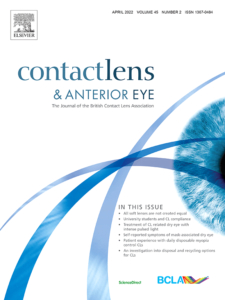Meibomian gland dysfunction and its determinants in Iranian adults: A population-based study
Authors
Affiliations
1Noor Ophthalmology Research Center, Noor Eye Hospital, Tehran, Iran.
2Noor Research Center for Ophthalmic Epidemiology, Noor Eye Hospital, Tehran, Iran.
3Ophthalmic Epidemiology Research Center, Shahroud University of Medical Sciences, Shahroud, Iran.
4Department of Epidemiology and Biostatics, School of Public Health, Tehran University of Medical Sciences, Tehran, Iran. Electronic address: afotouhi@tums.ac.ir.
Abstract
Purpose: To estimate the prevalence of Meibomian gland dysfunction (MGD) and determine the associated factors in the general population in Iran.
Methods: This cross-sectional study is based on the data from the second phase of the Shahroud Eye Cohort Study conducted in 2014. Of the 4737 participants of the second phase, data was available for 4700 people; their mean age was 55.9±6.2 years and 2768 (58.9%) were women. Diagnosis of MGD was made based on the classification of the International Workshop on MGD as judged by the examining ophthalmologist. The prevalence of MGD was summarized as percentage and 95% confidence intervals (CI), and related factors were studied through simple and multiple logistic regressions.
Results: The diagnosis of MGD in at least one eye was recorded for 1235 (26.3%) participants; the prevalence of unilateral and bilateral MGD was 26.3% (95% CI: 24.5-28.1) and 26.1% (95% CI: 24.3-27.9), respectively. In the multiple logistic regression analyses, MGD significantly correlated with pinguecula [odds ratio (OR)=1.3, 95% CI: 1.12-1.50], hypertension (OR=1.34, 95% CI: 1.11-1.61), high-density lipoprotein (HDL) level (OR=0.0992, 95% CI: 0.986-0.999), diabetes mellitus (OR=0.83, 95% CI: 0.71-0.97), and years of education (OR=0.98, 95% CI: 0.96-0.99).
Conclusions: MGD prevalence in this study was lower than the rates reported in other studies on Asian populations. Besides HDL level, MGD is associated with another ocular surface disorder, namely pinguecula, as well as certain systemic diseases such as hypertension and diabetes mellitus. These associations should be taken into consideration when diagnosing MGD.
Keywords: Iran; Meibomian gland dysfunction; Population-based study; Prevalence.

